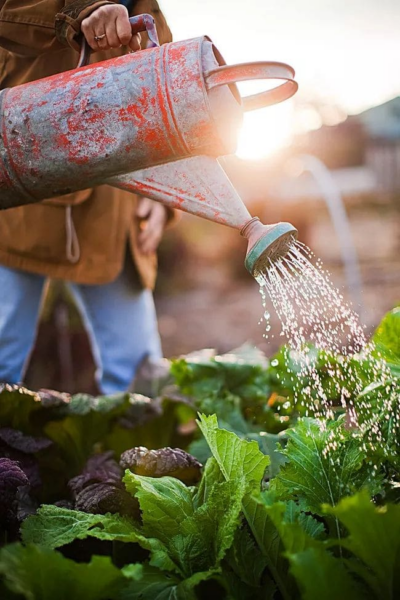Cultural Interactions Between Spaniards and Native People in Texas
The story of cultural interactions between Spaniards and Native people in Texas is a rich tapestry of exchange, adaptation, conflict, and collaboration. Spanning centuries, these interactions laid the groundwork for Texas’s unique identity, blending Spanish colonial traditions with the diverse customs of indigenous peoples. This in-depth exploration delves into how these groups influenced one another and examines the lasting impact of their relationships.

Source: worldheritagesa
1. The Arrival of Spaniards in Texas: Setting the Stage
Early Explorers and Initial Encounters
The first interactions between Spaniards and Native people in Texas began with Spanish expeditions in the 16th century. Explorers like Álvar Núñez Cabeza de Vaca and later Francisco Vázquez de Coronado ventured into the vast, uncharted lands of what is now Texas. They encountered indigenous groups like the Karankawa, Coahuiltecan, and Apache.
For Native communities, the Spaniards were both a curiosity and a threat. These early explorers brought new technologies, animals, and goods, but also diseases and ambitions of conquest. Initial interactions were often fleeting, marked by exchanges of food and goods, but they set the tone for more permanent and complex relationships in the centuries to come.
2. The Spanish Mission System: A Tool for Cultural Exchange and Colonization
Purpose and Structure of Missions
By the late 17th and 18th centuries, Spain’s strategy shifted from exploration to colonization. The Spanish mission system became the centerpiece of this effort. Missions like Mission San Antonio de Valero (the Alamo), Mission Concepción, and Mission Espada were established across Texas to achieve three main goals:
- Christianize Indigenous Peoples: Catholic missionaries sought to convert Native populations to Christianity, teaching them Catholic doctrines and rituals.
- Integrate Natives into Spanish Society: Missions aimed to transform Native peoples into loyal Spanish subjects, introducing them to European customs, language, and governance.
- Expand Spain’s Territorial Claims: Missions helped solidify Spain’s control over Texas, acting as cultural and economic outposts.
Life in the Missions
Life inside the missions was a blend of cooperation and coercion. Indigenous peoples were taught European agricultural methods, masonry, and carpentry while adapting to structured routines dictated by the mission’s religious and social framework. Daily life revolved around prayer, work, and instruction in Christian principles.
For many Native groups, these missions represented a profound disruption to their traditional ways of life. Some joined voluntarily, seeking protection or resources during difficult times, while others were coerced or captured.
Art and Architecture: A Cultural Fusion
The missions themselves were physical representations of cultural exchange. Constructed with Native labor, they often featured European architectural styles blended with local materials and indigenous craftsmanship. For example, the intricate stone carvings on mission churches frequently incorporated Native motifs, reflecting a blending of Spanish and indigenous artistic traditions.

Source: alamy
3. Economic Transformations and Resource Sharing
Agriculture and Livestock
One of the most significant impacts of Spanish colonization was the transformation of agriculture. Spaniards introduced crops like wheat, sugarcane, and citrus fruits, which complemented Native staples such as maize, beans, and squash. This agricultural blending laid the foundation for Texas’s diverse farming traditions.
The introduction of livestock, including cattle, sheep, and horses, also revolutionized the region. Horses, in particular, became highly valued by Native groups, reshaping their mobility, hunting practices, and warfare.
Trade Networks
Trade between Spaniards and Native peoples became a cornerstone of economic interaction. While the Spanish provided goods like metal tools, beads, and textiles, Native groups contributed items such as furs, food, and crafts. These exchanges were not always equitable but fostered interdependence.
4. Conflict and Resistance: A Complex Relationship
While there were moments of cooperation, the relationship between Spaniards and Native peoples in Texas was often fraught with tension and conflict.
Forced Labor and Cultural Suppression
The mission system, while ostensibly aimed at uplifting Native peoples, often exploited their labor and suppressed their traditional practices. Many indigenous individuals were forced to work in agriculture or construction under harsh conditions, leading to resentment and rebellion.
Disease and Demographic Shifts
Perhaps the most devastating consequence of Spanish colonization was the introduction of European diseases like smallpox, measles, and influenza. These epidemics decimated Native populations, sometimes wiping out entire communities. The resulting demographic collapse weakened Native resistance and fundamentally altered the cultural landscape.
Uprisings and Raids
Native resistance took many forms, from subtle acts of defiance within missions to outright rebellion. Groups like the Comanche and Apache frequently raided Spanish settlements and missions, challenging their dominance. These conflicts underscored the deep divisions between the two groups and the unwillingness of many Native peoples to fully assimilate into Spanish colonial life.
5. Mutual Influences on Culture and Society
Despite the conflicts, Spaniards and Native peoples profoundly influenced each other’s cultures. This blending of traditions is evident in many aspects of Texas life.
Language and Communication
The linguistic exchange between Spaniards and Native peoples was a two-way street. Spanish missionaries and settlers often adopted Native words to describe local plants, animals, and geographic features, many of which remain in use today. Similarly, indigenous communities incorporated Spanish terms into their languages.
The result was the emergence of a distinct linguistic identity, particularly evident in modern Tex-Mex Spanish, which reflects centuries of cultural blending.
Cuisine
The fusion of Spanish and Native culinary traditions gave rise to many iconic Texan dishes. Spaniards introduced staples like wheat, olive oil, and spices, while Native peoples contributed ingredients like corn, beans, and chili peppers. Together, these influences created the foundation for Tex-Mex cuisine, known for its bold flavors and diverse ingredients.

Source: templebarbcn
Art and Music
Spanish colonists introduced European musical instruments and styles, while Native groups contributed their own rhythms and melodies. This fusion of traditions enriched the region’s artistic expressions, paving the way for unique cultural forms like Tejano music.
6. The Legacy of Cultural Interactions in Modern Texas
Place Names and Cultural Landmarks
Many of Texas’s cities, rivers, and landmarks bear names that reflect the Spanish influence, such as San Antonio, El Paso, and the Guadalupe River. These names serve as enduring reminders of the interactions between Spaniards and Native peoples.
Festivals and Celebrations
Modern Texas celebrates its multicultural heritage through events like Fiesta San Antonio, which highlights the blending of Spanish, Mexican, and Native traditions. These festivals serve as vibrant expressions of the region’s diverse cultural roots.
Architectural Heritage
The missions of Texas, now preserved as UNESCO World Heritage Sites, stand as enduring symbols of this cultural exchange. They attract visitors from around the world, offering a glimpse into the complex history of the region.
7. Lessons from the Past
The story of Spaniards and Native peoples in Texas is a powerful reminder of the complexities of cultural interaction. It highlights the resilience of indigenous communities, the challenges of colonization, and the transformative power of cultural exchange.
By studying this history, we gain a deeper appreciation for the diversity and richness of Texas’s cultural heritage. It also prompts us to reflect on the ways in which different cultures can coexist, adapt, and thrive together, even in the face of adversity.
Conclusion: A Dynamic Legacy of Cultural Exchange
The cultural interactions between Spaniards and Native people in Texas were far more than a simple narrative of conquest. They were dynamic, multifaceted, and deeply influential. Through cooperation, conflict, and adaptation, these groups reshaped Texas’s identity in profound ways.
Today, the legacy of these interactions is visible in Texas’s food, language, architecture, and traditions. By exploring this history, we not only honor the contributions of those who came before but also celebrate the vibrant, multicultural spirit that defines Texas today.





















